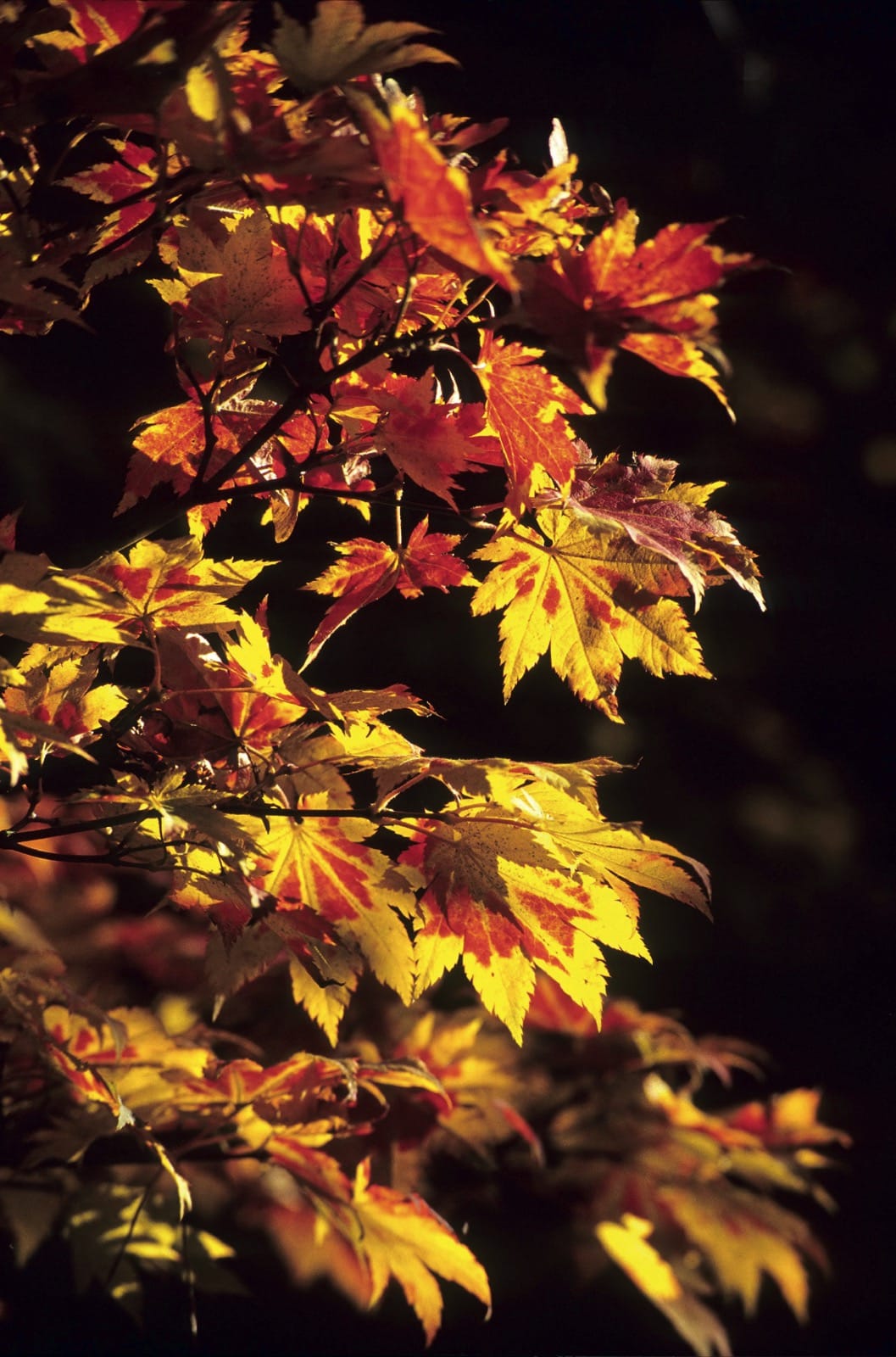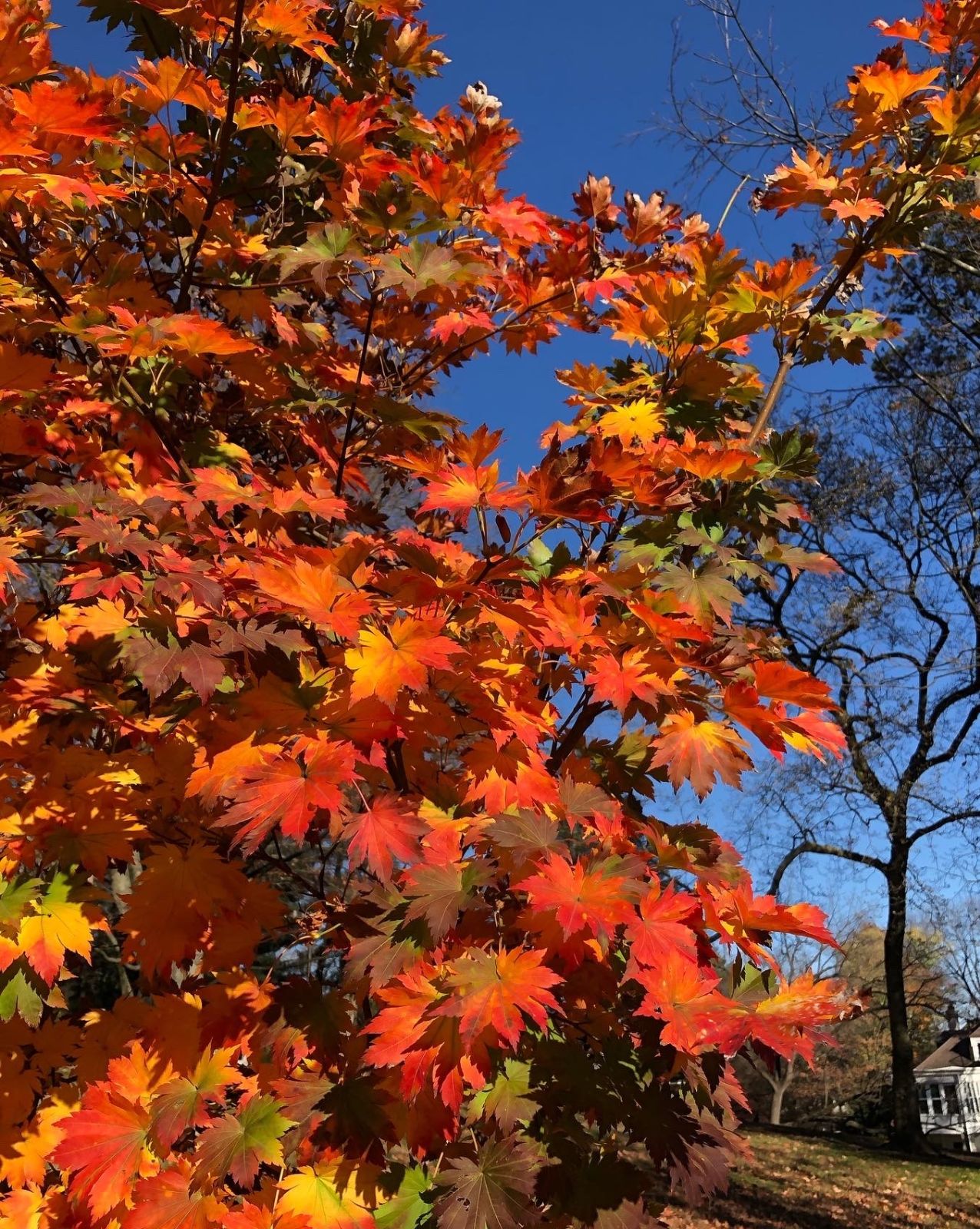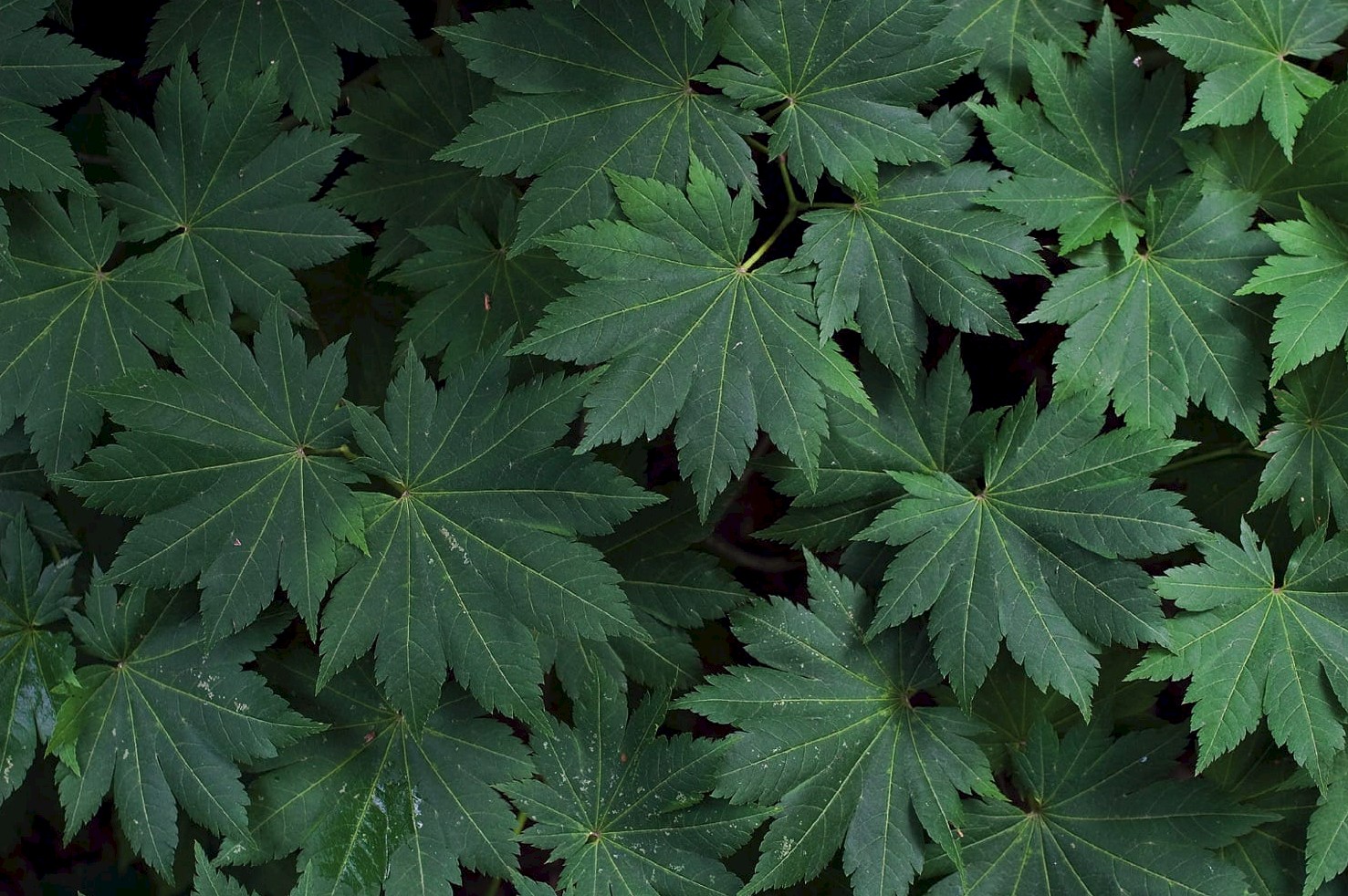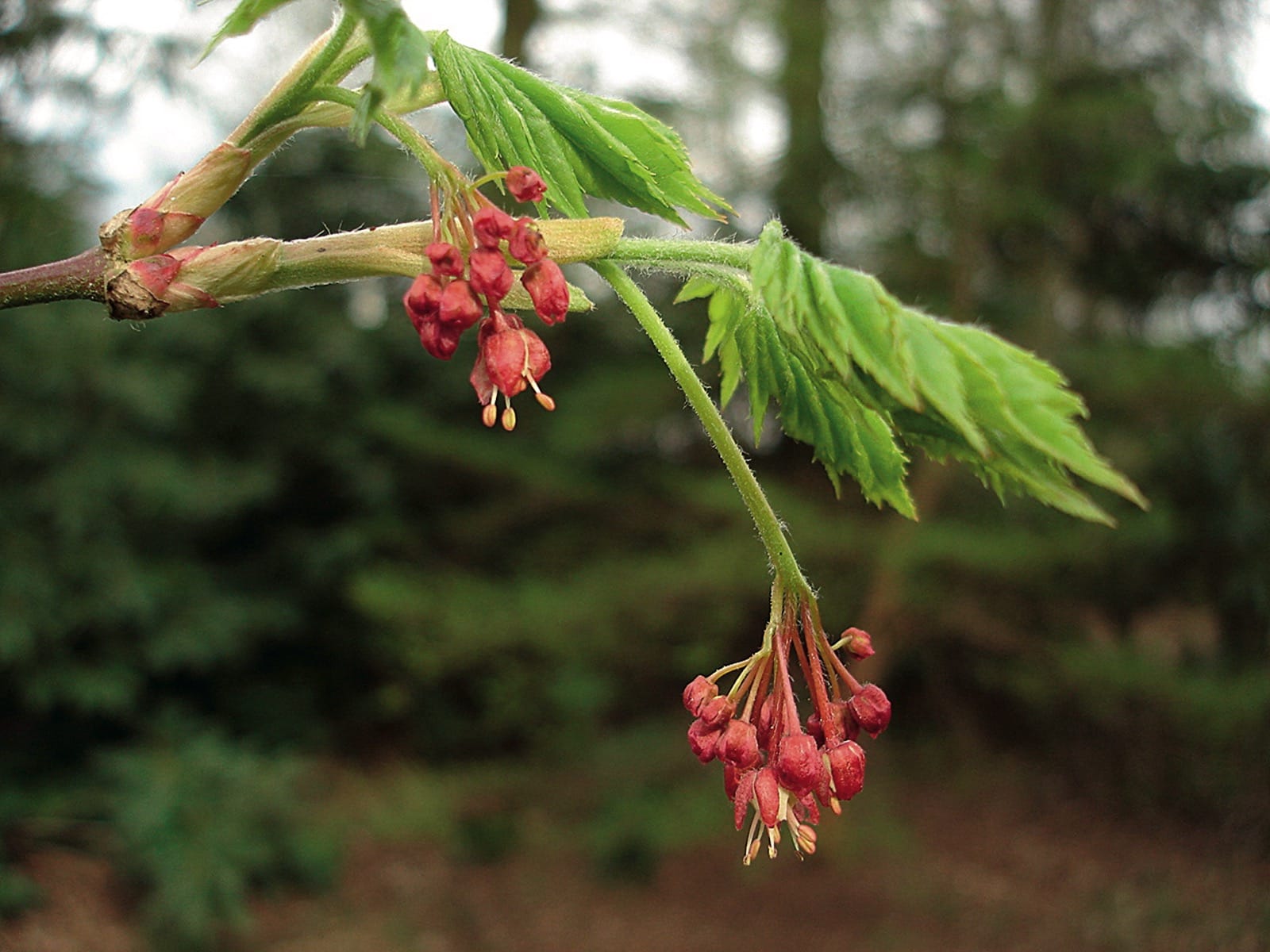Acer pseudosieboldianum
Sponsor
Kindly sponsored by
a member of the International Dendrology Society
Credits
Article from New Trees by John Grimshaw & Ross Bayton
Recommended citation
'Acer pseudosieboldianum' from the website Trees and Shrubs Online (treesandshrubsonline.
Genus
- Acer
- Sect. Palmata, Ser. Palmata
Common Names
- Keijo Maple
- Korean Maple
Synonyms
- A. microsieboldianum Nakai
Infraspecifics
Other taxa in genus
- Acer acuminatum
- Acer amplum
- Acer argutum
- Acer barbinerve
- Acer buergerianum
- Acer caesium
- Acer calcaratum
- Acer campbellii
- Acer campestre
- Acer 'Candy Stripe'
- Acer capillipes
- Acer cappadocicum
- Acer carpinifolium
- Acer 'Cascade'
- Acer caudatum
- Acer ceriferum
- Acer chapaense
- Acer chienii
- Acer circinatum
- Acer cissifolium
- Acer × conspicuum
- Acer cordatum
- Acer coriaceifolium
- Acer × coriaceum
- Acer crataegifolium
- Acer davidii
- Acer diabolicum
- Acer distylum
- Acer divergens
- Acer duplicatoserratum
- Acer elegantulum
- Acer erianthum
- Acer 'Esk Flamingo'
- Acer fargesii
- Acer fenzelianum
- Acer flabellatum
- Acer forrestii
- Acer franchetii
- Acer × freemanii
- Acer fulvescens
- Acer 'Gimborn'
- Acer ginnala
- Acer glabrum
- Acer 'Gold Coin'
- Acer granatense
- Acer grandidentatum
- Acer griseum
- Acer heldreichii
- Acer henryi
- Acer × hillieri
- Acer hookeri
- Acer hyrcanum
- Acer japonicum
- Acer kawakamii
- Acer komarovii
- Acer laevigatum
- Acer laurinum
- Acer laxiflorum
- Acer lobelii
- Acer longipes
- Acer macrophyllum
- Acer mandshuricum
- Acer maximowiczianum
- Acer maximowiczii
- Acer metcalfii
- Acer miaotaiense
- Acer micranthum
- Acer 'Mindavi'
- Acer 'Minorient'
- Acer miyabei
- Acer miyabei × campestre
- Acer monspessulanum
- Acer morifolium
- Acer 'Mozart'
- Acer oblongum
- Acer obtusifolium
- Acer okamotoanum
- Acer oliverianum
- Acer opalus
- Acer orientale
- Acer palmatum
- Acer papilio
- Acer pauciflorum
- Acer pectinatum
- Acer pensylvanicum
- Acer pentaphyllum
- Acer pentapotamicum
- Acer pictum
- Acer pilosum
- Acer pinnatinervium
- Acer platanoides
- Acer platanoides × amplum
- Acer platanoides × truncatum
- Acer × pseudoheldreichii
- Acer pseudoplatanus
- Acer pubinerve
- Acer pycnanthum
- Acer rubescens
- Acer rubrum
- Acer rufinerve
- Acer saccharinum
- Acer saccharum
- Acer sempervirens
- Acer 'Serpentine'
- Acer serrulatum
- Acer shenkanense
- Acer sieboldianum
- Acer sikkimense
- Acer 'Silver Cardinal'
- Acer 'Silver Ghost'
- Acer sinense
- Acer sinopurpurascens
- Acer spicatum
- Acer stachyophyllum
- Acer taronense
- Acer tataricum
- Acer tegmentosum
- Acer tenellum
- Acer tetramerum
- Acer tibetense
- Acer tonkinense
- Acer triflorum
- Acer truncatum
- Acer tschonoskii
- Acer turkestanicum
- Acer tutcheri
- Acer ukurunduense
- Acer velutinum
- Acer wardii
- Acer 'White Tigress'
- Acer wilsonii
- Acer × zoeschense
Shrub or tree 8–10 m; crown rather open, often wider than tall. Branchlets sticky, long and slender with a whitish bloom. Leaves deciduous, papery, 10–15 cm wide, palmately 9– to 11-lobed, divided to half or two-thirds of the length, upper surface dark green, lower surface densely white pubescent, margins double-serrate, apex acuminate; petiole 3.5–4 cm long, densely pubescent when young; autumn colour yellow, orange or red. Inflorescence terminal, corymbose, pubescent. Flowers 5-merous, staminate or hermaphrodite; sepals lanceolate, reddish purple, petals white to cream, obovate, stamens eight. Samaras ~3 cm long, purplish yellow, wings strongly veined, spreading obtusely. Flowering May to June, fruiting September to October (China). Van Gelderen et al. 1994, van Gelderen & van Gelderen 1999, Xu et al. 2008. Distribution CHINA: Heilongjiang, southeast Jilin, eastern Liaoning; NORTH KOREA; RUSSIAN FEDERATION. Habitat Forests between 700 and 900 m asl. USDA Hardiness Zone 4–5. Conservation status Not evaluated. Illustration NT101. Cross-reference B206, K99. Taxonomic note A number of segregates were named by Nakai but are disregarded by van Gelderen et al. (1994); they occasionally appear in catalogues.
Despite being widely grown in maple collections throughout our area, Acer pseudosieboldianum is rather overshadowed by its close relatives A. japonicum and A. palmatum and other members of series Palmata, which surpass it in foliage qualities, although not in hardiness. Dirr (1998) evaluates A. palmatum as suitable for Zones 5 and 6–8, but recommends A. pseudosieboldianum as a substitute in Zones 4–5, as being better able to tolerate low winter temperatures. This is borne out by experi ence at Rogów in Poland (Zone 6), where it flourishes and is hardier than both A. palmatum and A. japonicum (Tumilowicz 2002, Banaszczak 2007). The trees there, planted in 1974, are now reaching 8–9 m tall (P. Banaszczak, pers. comm. 2007). It also flourishes 350 km north of the Arctic Circle in the Tromsø Arctic-alpine Botanical Garden, Norway, so can be generally considered to be totally hardy (G. Halstad, pers. comm. 2023).
Acer pseudosieboldianum subsp. pseudosieboldianum has leaves that are rounded, with short divisions, and thus lack the elegance associated with the Japanese maples. It was not recommended by van Gelderen et al. (1994) on account of a poor, ‘floppy and loose’ shape, and the habit of retaining dull brown leaves on the twigs for some time before they fall. This, however, contrasts with travellers’ descriptions of it (for example, E.H. Wilson, quoted in Bean 1976a; Flanagan & Kirkham 2005) as a brilliant autumn feature of its native forests, with yellow to scarlet colours – and the persistence of the leaves is seen by others as an advantage! Although its date of introduction is cited as 1903 (Krüssmann 1984, Johnson 2003), the details seem to be obscure. The largest specimen in the United Kingdom is in the Bute Park Arboretum, Cardiff, where it was 11 m tall in 2005 (TROBI).
subsp. takesimense (Nakai) P.C. de Jong
Subsp. takesimense is a heavily branched shrub or small tree, often with smaller (5–10 cm across), typically 9– or 11-lobed leaves. Fruits small, wings spreading horizontally. Van Gelderen et al. 1994, van Gelderen & van Gelderen 1999. Distribution SOUTH KOREA: Ullung-do. Habitat Forests. USDA Hardiness Zone 6–7. Conservation status Not evaluated. Illustration NT34, NT102, NT108. Taxonomic note Some authorities maintain this as a separate species, A. takesimense Nakai.
This beautiful maple is the second endemic Acer on Ullung-do, but rather scarce there (Flanagan & Kirkham 2005). It was introduced to cultivation in 1982 by James Harris and Stephen Spongberg, at the same time as A. pictum var. okamotoanum, and has been collected by other expeditions since (though not by Flanagan and Kirkham). It is an exceptionally attractive tree and, unlike the nominate subspecies, can hold its own amongst the familiar Japanese species, with leaves that are almost circular if traced around the points of their numerous lobes. The leaves somewhat resemble those of A. shirasawanum, but are much larger. In summer they are dark green, and in autumn turn orange or yellow.
Although now represented in collections across our area and in commerce, A. pseudosieboldianum subsp. takesimense cannot be described as a common plant. At Hergest Croft a specimen received as seed from Chollipo Arboretum and planted in Park Wood in 1990 is currently 4–5 m tall, and there is a similar-sized one at the Arnold Arboretum. At Rogów in Poland it has grown well and has suffered no winter damage since planting in 1994, achieving 2.5 m after seven years (Tumilowicz 2002, Banaszczak 2007). Its habit is typically rather upright, and it is best considered to be a small tree with several erect branches arising from above the base.










